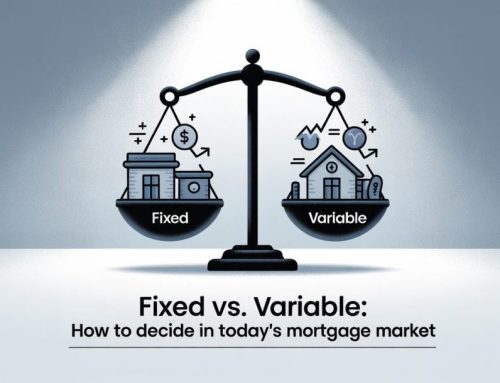If your mortgage renewal is approaching, you might be facing higher payments due to increased interest rates. Most mortgage holders had to qualify for their mortgage based on a higher “stress test” rate. This means they had to prove they could afford payments even if rates increased—ensuring payments remain manageable despite rising rates.
While payments should still be affordable given the initial stress test, the reality is that today’s higher rates will lead to a hefty jump in payments. This increase will reduce your monthly cash flow and may even affect the lifestyle you’ve grown accustomed to. For some, this rise in payments leads to an uncomfortable financial strain.
While some may be able to manage the higher payments, others will be looking for ways to reduce their monthly costs. The most effective way to do this is by refinancing your mortgage with a longer amortization period.
Renewing Your Mortgage
When your mortgage term ends, most people either renew with the same lender or transfer to another lender offering a lower rate. Securing lower rates at renewal is something we excel at and is a significant part of our business.
However, renewing your mortgage isn’t always the best option, as it simply continues your current mortgage. In other words, your new mortgage will start with your current balance and remaining amortization.
For example, let’s say your mortgage started five years ago with a balance of $765,000 at 2.79%, amortized over 25 years. Your monthly payment would have been $3,538.40. If you maintained monthly payments without using any prepayment privileges, you would owe $651,221.72 at renewal, with 20 years remaining.
If you were to renew at today’s lowest 5-year fixed rate of 4.44%*, your new monthly payment would jump to $4,084.70—an increase of $546.30. That’s equivalent to a car payment, but with no car to show for it. The extra money simply goes toward the higher interest rate.
Original Mortgage
Starting balance: $765,000
Rate: 2.79%
Amortization: 25 years
Payment: $3,538.40
Balance at maturity (renewal): $651,221.72
New Mortgage After Renewal
Balance: $651,221.72
Rate: 4.44%
Amortization: 20 years
Payment: $4,084.70
Payment increase: $546.30
Now let’s look at how we can improve the situation.
Lowering Your Mortgage Payment by Refinancing
Refinancing allows you to extend your amortization to a maximum of 30 years, which can significantly reduce your payments. As of today, the lowest 5-year fixed refinancing rate is 4.64%*, just 0.20% higher than the renewal rate. While some may be deterred by the higher rate, our focus here is on reducing your mortgage payment.
Using the same balance of $651,221.72, your new monthly payment with a 30-year amortization at the 4.64% rate would drop by $747.89 to $3,336.81. This is even lower than your original payment from five years ago, despite the higher interest rate. The combination of a lower starting balance and a longer amortization period leads to a significantly reduced payment.
New Mortgage Once Refinanced
Balance: $651,221.72
Rate: 4.64%
Amortization: 30 years
Payment: $3,336.81
Payment decrease vs. renewal: $747.89
Disadvantages to Refinancing
There are a few disadvantages to refinancing that need to be pointed out:
- Higher mortgage rate
- More interest paid
- Additional fees
- Longer time to Mortgage Freedom
Higher Mortgage Rate
The first is the obvious. The rate can be a bit higher. Note that this is not always the case and for some situations, refinancing your mortgage won’t result in any rate increase at all. This makes the refinancing option all that much more alluring.
More Interest Paid
A higher mortgage rate will of course result in paying more interest. However, the longer amortization will also result in more interest paid, even if the rate is the same. As your payments are now spread over a longer period, a larger chunk of each mortgage payment is allocated to interest and less to principal compared with the option of simply renewing your mortgage. But again, this is not about paying less interest. It’s about keeping as much money in your pocket at the end of each month, therefore, improving your financial situation on a monthly basis.
Additional Fees
While the refinancing process is similar to transferring your mortgage to another lender, the mortgage needs to be re-registered for the higher amount. This results in a legal fee of roughly $800 in Ontario. The exact number can vary from province to province and can range from as low as $600 to as high as $900. There are some lenders who will provide a cash back to cover this fee for you. At the time of presenting you your mortgage options, we’ll let you know if the fee is applicable to your situation.
Most lenders will also require an appraisal when refinancing. Much like the legal fee, some lenders will cover this for you… or it can sometimes be reimbursed to you after closing. Every situation can be a bit different, but we’ll be sure to advise you of the costs when presenting you with your options.
Longer Time to Mortgage Freedom
The longer the amortization, the longer until you pay off your mortgage. However, this doesn’t have to be the case. In fact, the original amortization really only serves two purposes:
- To determine your maximum qualified mortgage amount
- To set your minimum mortgage payment
As most mortgages offer prepayment privileges, you’re in the driver’s seat with full control over your amortization. As soon as you make additional payments, towards your mortgage, your amortization drops. I explain this in detail in my blog on Why Your Initial Amortization is Irrelevant.
That said, the entire reason why we are refinancing to begin with in this case is to lower your payment. So why would you then want to increase it?
The answer is that you may not want to. But the option is yours if you find the payments easily manageable. You can also choose a lower amortization once the new mortgage comes up for renewal which will then hopefully be at a lower rate.
For more information, check out my blog on Everything You Need To Know About Mortgage Refinancing.
Conclusion
While securing the lowest mortgage rate is important, for many, maintaining healthy cash flow is even more critical. Refinancing can significantly reduce your monthly payment, providing much-needed financial relief. The right choice depends on your specific circumstances, and one of our account managers would be happy to discuss your options and help you make the best decision for your situation.








Leave A Comment